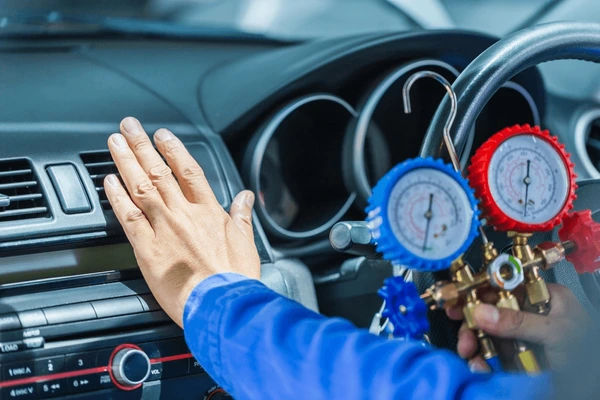
When your car’s climate control system isn’t working properly, it can quickly turn a comfortable drive into a frustrating experience. Whether it’s blasting hot air in the summer, refusing to warm up in the winter, or simply not responding to your settings, a failing climate control system affects both comfort and safety.
The good news? With the right knowledge and a little patience, you can often diagnose and even fix the issue without rushing to an expensive repair shop. Let’s explore how to identify common problems with your car’s climate control system and practical steps to resolve them.
The climate control system isn’t just about comfort - it’s about safety and functionality too. A properly working system helps:
When it starts failing, it’s not only inconvenient but can also create dangerous driving conditions.
Before diving into fixes, it’s important to recognize the warning signs that your system may be in trouble. Here are the most common symptoms:
Diagnosing a climate control problem may sound complicated, but breaking it down makes it manageable. Here’s where to start:
Sometimes the issue isn’t as serious as it seems. Make sure to:
It sounds simple, but you’d be surprised how often the fix is as basic as correcting a setting.
Blown fuses are a common cause of climate control failure. Locate your car’s fuse box (usually under the dashboard or hood), and check the climate control system fuse. If it’s blown, replace it with one of the same rating.
A clogged air filter can drastically reduce airflow and cause the system to overwork. If the airflow feels weak or smells musty, pull out the cabin filter and inspect it. Replacing it is one of the cheapest and easiest fixes you can do.
If no air is coming through the vents even when the fan is on high, the blower motor may be failing. Listen for unusual noises like grinding or squealing. A mechanic can test it directly, but in many cars, you can visually inspect connections and check for power at the blower.
For cars with digital climate control, unresponsive buttons or screens may indicate a faulty control unit. For manual systems, knobs that spin freely or don’t adjust airflow might mean broken linkages or wiring problems.
If the AC isn’t cooling, low refrigerant levels or a refrigerant leak could be the culprit. This is harder to test at home, but signs include hissing sounds, oily residue around AC components, or a lack of cold air.
If your system blows cold air when you want heat, the heater core may be clogged or leaking. Sweet-smelling odors or foggy windows are also indicators of heater core issues.
Not every climate control issue requires a professional mechanic. Here are some common fixes you can tackle on your own:
Tighten connections – Loose electrical connections can sometimes cause intermittent problems.
While many fixes are DIY-friendly, some require professional tools and expertise:
If your DIY fixes don’t solve the issue or if you notice fluid leaks, burning smells, or electrical shorts, it’s time to bring in a qualified mechanic.
A little maintenance goes a long way in keeping your climate control system healthy. Follow these tips to extend its life:
A failing climate control system doesn’t just make driving uncomfortable - it can affect your safety and your car’s overall performance. By learning how to spot the warning signs, diagnose issues, and attempt simple fixes, you can save money, avoid unnecessary stress, and enjoy a smoother ride.
When DIY efforts fall short, don’t hesitate to involve a professional. A reliable mechanic can pinpoint complex issues and get your system working like new again.
Keeping your climate control system in top shape means you’ll always enjoy a comfortable and safe driving experience - no matter what the weather throws at you.
1. What’s the most common cause of climate control failure?
Blown fuses and clogged cabin air filters are among the most common issues. Both are inexpensive and easy to fix.
2. Why does my AC blow cold air sometimes and warm air other times?
This could indicate low refrigerant levels, a failing compressor, or electrical problems in the control system.
3. Can I recharge my car’s AC myself?
Yes, you can use a DIY refrigerant recharge kit, but it’s important to use the right type of refrigerant for your vehicle. For leaks, see a mechanic.
4. How much does it cost to repair a climate control system?
It varies widely - from $30 for a new filter to $1,000+ for major repairs like a heater core replacement.
5. How often should I replace the cabin air filter?
Most manufacturers recommend every 12,000 to 15,000 miles, but check your owner’s manual for specifics.